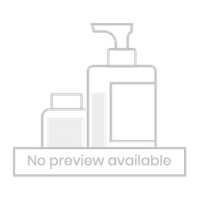Silva 1% Cream
Rs.63for 1 tube(s) (15 gm Cream each)
Composition FOR Silva
Lidocaine(2% w/w),Silver Sulfadiazine(1% w/w),Chlorhexidine Gluconate(0.2% w/w)food interaction for Silva
alcohol interaction for Silva
pregnancy interaction for Silva
lactation interaction for Silva
medicine interaction for Silva
food
alcohol
pregnancy
lactation
medicine
No interaction found/established
No interaction found/established
Information regarding the use of Silva 1% Cream during pregnancy is not available. Please consult your doctor.
CONSULT YOUR DOCTOR
Information regarding the use of Silva 1% Cream during breastfeeding is not available. Please consult your doctor.
CONSULT YOUR DOCTOR
No interaction found/established
SALT INFORMATION FOR Silva
Lidocaine(2% w/w)
Uses
Lidocaine is used for local anesthesia.
How it works
Lidocaine is a local anesthetic. It works by blocking the transmission of pain signals from the nerves to the brain. This helps to decrease the sensation of pain.
Common side effects
Allergic reaction, Application site reactions (burning, irritation, itching and redness)
Silver Sulfadiazine(1% w/w)
Uses
Silver Sulfadiazine is used in the treatment of burns. It is applied on the burnt skin from getting infected.
How it works
Silver Sulfadiazine is an antibiotic. It stops the bacteria from producing folic acid, a nutrient required for bacterial multiplication.
Common side effects
Rash, Interstitial nephritis, Skin discoloration, Burning sensation, Decreased white blood cell count (lymphocytes), Skin necrosis, Erythema multiforme, Agranulocytosis (deficiency of granulocytes in the blood), Aplastic anemia, Low blood platelets, Hemolytic anemia, Stevens-Johnson syndrome, Toxic epidermal necrolysis, Exfoliative dermatitis, Gastrointestinal symptoms, Hepatitis (viral infection of liver), Liver necrosis, Central nervous system depression, Renal toxicity
Chlorhexidine Gluconate(0.2% w/w)
Uses
Chlorhexidine Gluconate is used in the treatment of Mouth infection.
How it works
Chlorhexidine Gluconate is an antiseptic. It works by killing harmful microorganisms and cleans the affected area.
Common side effects
Taste change, Allergic reaction, Dryness in mouth, Loss of taste sensation, Immune disorders, Hypersensitivity, Anaphylactic shock
SUBSTITUTES FOR Silva
No substitutes foundExpert advice FOR Silva
- Lidocaine is prescribed to relieve itching and pain caused by scrapes, burns, rashes, bites and eczema.
- Apply it over the affected area with a clean fingertip, three to four times a day or as directed by your doctor.
- Do not apply it to broken or infected areas of skin, face, eyes or eyelids unless instructed to by your doctor.
- Do not cover the area being treated with airtight dressings such as bandages unless directed by a doctor, as this may increase the risk of side effects.
- Avoid contact with eyes, mouth, and nose. In case of accidental contact, rinse thoroughly with water.
- Consult your doctor if your skin condition has not improved after 2-4 weeks of treatment.
- Inform your doctor if you are pregnant, planning pregnancy or breastfeeding.
Frequently asked questions FOR Silva
Lidocaine
Q. What is Lidocaine used for?
This medication is usually applied by a healthcare professional to the area being treated or to the medical equipment as part of a medical procedure. It helps to numb the area and reduces the discomfort associated with the insertion of medical instruments such as needles or catheters. It also helps to reduce the pain and inflammation in conditions such as heamorrhoids (piles) and anal fissures.
Q. Is Lidocaine toxic?
If Lidocaine is used under the supervision of a doctor or as directed by your doctor, it is generally safe to use. However, using more than what is recommended may lead to a number of serious health issues such as numbness of mouth and throat if swallowed. This can lead to difficulty swallowing and even choking.
Q. How long does it take for Lidocaine to work?
Lidocaine is applied at the start of a medical procedure and takes 3-5 minutes for the numbing effect to occur.
Silver Sulfadiazine
Q. Is silver sulfadiazine cream good for sunburns?
Yes, Silver Sulfadiazine is used to treat severe sun burns.
Q. Does silver sulfadiazine prevent scarring?
Silver Sulfadiazine is a topical antimicrobial agent used to prevent and treat infection of burns. It has no known effects on scars
Q. Does Silver Sulfadiazine works on acne?
Silver sulfadiazine is a topical antimicrobial agent used as an adjunct to prevent and treat infection of burns. Its use on the face is usually avoided. Hence, it is not recommended for acne
Chlorhexidine Gluconate
Q. How long should you use Chlorhexidine Gluconate?
The duration of use of Chlorhexidine Gluconate will depend on the condition it is being prescribed for. If you are using it for gum disease (gingivitis) it may be used for a month. If being used for mouth ulcers and thrush, this mouthwash may be used till 2 days after the symptoms are relieved.
Q. Does Chlorhexidine Gluconate stain teeth?
Yes, though it does not occur in everyone, Chlorhexidine Gluconate may stain your teeth and tongue. Staining is not permanent and may disappear after discontinuation of treatment. Brushing the teeth with regular toothpaste before using Chlorhexidine Gluconate can prevent staining. You should also avoid tannin-containing food and drinks such as tea and coffee.
Q. Does Chlorhexidine Gluconate help bad breath?
Yes, Chlorhexidine Gluconate is effective in reducing bad breath, which persists for about 3 hours. However, the risk of staining teeth and alteration of taste should be borne in mind before you start using it. Also, use this medicine judiciously.















